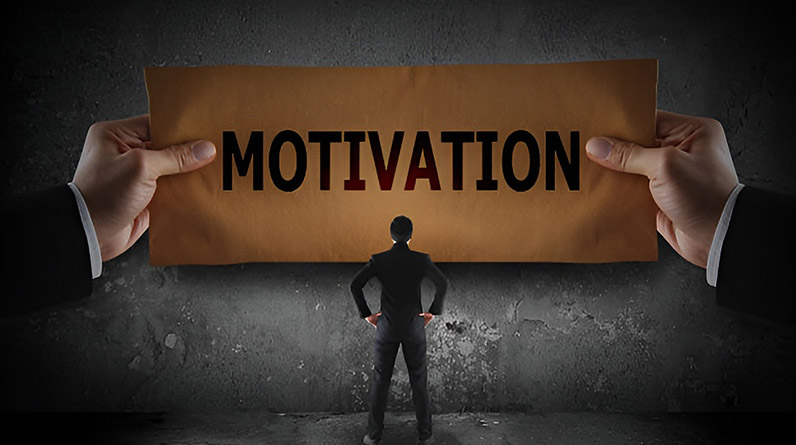Have you ever started the day with ambitious plans, only to find yourself scrolling through social media three hours later, wondering where your drive disappeared? You’re not alone. Motivation isn’t just about willpower or positive thinking—it’s a complex interplay of brain chemistry, psychological patterns, and environmental triggers that scientists have been studying for decades.
Understanding the science behind motivation gives you a blueprint for sustained achievement. When you know what actually drives human behavior at a neurological level, you can design your life to work with your brain, not against it. This article explores the fascinating science of motivation and provides evidence-based strategies to keep your drive consistently high.
What Is Motivation? The Scientific Definition
Motivation is the psychological force that initiates, guides, and maintains goal-oriented behaviors. It’s what causes you to act—whether that’s grabbing a glass of water when you’re thirsty or pursuing a decade-long career goal.
From a neuroscientific perspective, motivation involves several key brain systems:
- The dopamine reward pathway – Anticipates and responds to rewards
- The prefrontal cortex – Handles planning and decision-making
- The amygdala – Processes emotional responses
- The nucleus accumbens – Links motivation to action
These systems work together to evaluate potential rewards, assess effort required, and ultimately decide whether to pursue a goal.
The Two Types of Motivation: Intrinsic vs. Extrinsic
Intrinsic Motivation: The Internal Drive
Intrinsic motivation comes from within. You engage in an activity because it’s inherently satisfying, enjoyable, or aligns with your personal values. Examples include reading for pleasure, solving puzzles because you enjoy the challenge, or helping others because it makes you feel fulfilled.
Research published in the Journal of Personality and Social Psychology shows that intrinsic motivation leads to better learning outcomes, greater creativity, and higher persistence compared to external rewards alone.
Extrinsic Motivation: External Rewards and Pressures
Extrinsic motivation involves doing something to earn a reward or avoid punishment. This includes working for a paycheck, studying to pass an exam, or exercising to lose weight.
While external motivators can be effective short-term, over-reliance on them can actually undermine intrinsic motivation—a phenomenon called the “overjustification effect.” When you start paying someone to do what they already enjoy, their internal drive can decrease.
The Optimal Motivation Mix
| Motivation Type | Best For | Sustainability | Example |
|---|---|---|---|
| Intrinsic | Long-term goals, creative work, personal growth | High | Learning a language because you love the culture |
| Extrinsic | Routine tasks, short-term objectives, accountability | Moderate | Meeting a deadline for a client project |
| Combined | Complex projects requiring both passion and discipline | Highest | Building a business you’re passionate about that also generates income |
The Neuroscience of Motivation: Your Brain on Drive
Dopamine: The Motivation Molecule
Contrary to popular belief, dopamine isn’t just a “pleasure chemical”—it’s primarily about motivation and anticipation. Research from Stanford University reveals that dopamine spikes not when you receive a reward, but when you anticipate receiving it.
This explains why the pursuit of goals often feels more exciting than their achievement. Your brain releases dopamine when you progress toward a goal, creating a natural motivation loop.
The Motivation Equation in Your Brain
Neuroscientist John Salamone’s research demonstrates that motivation follows a cost-benefit analysis. Your brain constantly weighs:
- Expected reward value
- Probability of success
- Effort required
- Time until reward
When the perceived reward outweighs the perceived cost, motivation increases. This is why breaking large goals into smaller milestones works so effectively—it improves the brain’s cost-benefit calculation.
The Role of the Prefrontal Cortex
Your prefrontal cortex acts as your brain’s CEO, managing executive functions like planning, focus, and self-control. When this region is fatigued—due to poor sleep, stress, or decision fatigue—your motivation plummets.
Studies show that willpower operates like a muscle. It can be strengthened through practice but also becomes depleted with overuse, explaining why motivation tends to be highest in the morning and decreases throughout the day.
Key Psychological Theories of Motivation
Self-Determination Theory (SDT)
Developed by psychologists Edward Deci and Richard Ryan, SDT proposes that humans have three fundamental psychological needs:
- Autonomy – The need to feel in control of your own behaviors and goals
- Competence – The need to build mastery and feel effective
- Relatedness – The need to feel connected to others
When these needs are met, intrinsic motivation flourishes. When they’re thwarted, motivation suffers—even if external rewards are present.
Goal-Setting Theory
Psychologists Edwin Locke and Gary Latham’s research demonstrates that specific, challenging goals lead to higher performance than vague or easy goals. However, there’s a sweet spot: goals must be challenging enough to be engaging but not so difficult that they feel impossible.
The most motivating goals share these characteristics:
- Specific and clearly defined
- Measurable with concrete metrics
- Moderately difficult (stretching but achievable)
- Include a timeline or deadline
- Connected to personal values
Expectancy-Value Theory
This theory states that motivation depends on two factors: your expectation of success and how much you value the outcome. Even if a goal is extremely valuable, you won’t feel motivated if you believe success is impossible. Conversely, easy achievements that hold no value won’t inspire action either.
Science-Backed Strategies to Keep Motivation High
1. Design Your Environment for Success
Your environment shapes your behavior more than willpower ever will. Researchers have found that environmental design can increase desired behaviors by up to 300%.
Practical applications:
- Place workout clothes next to your bed to exercise in the morning
- Remove distractions from your workspace (clear desk, phone in another room)
- Stock your kitchen with healthy foods to make good choices automatic
- Create visual reminders of your goals where you’ll see them daily
2. Leverage the Power of Small Wins
Harvard Business School researcher Teresa Amabile discovered that the single most powerful motivator at work is making progress in meaningful work—even tiny steps forward. She calls this the “Progress Principle.”
Break intimidating goals into micro-goals that can be achieved daily. Each small victory triggers dopamine release, creating momentum and building confidence.
Example: Instead of “write a book,” commit to “write 200 words daily.” The daily accomplishment keeps motivation renewable.
3. Use Implementation Intentions
Psychologist Peter Gollwitzer’s research on “implementation intentions” shows that people who use “if-then” plans are 2-3 times more likely to achieve their goals.
The formula is simple: “If [situation], then I will [behavior].”
- “If it’s 7 AM, then I will put on my running shoes and go for a run”
- “If I feel like procrastinating, then I will work for just 5 minutes”
- “If I’m tempted by junk food, then I will drink water first and wait 10 minutes”
This strategy works because it removes the need for in-the-moment decision-making, preserving mental energy.
4. Optimize Your Dopamine System
Since dopamine is central to motivation, supporting healthy dopamine function is crucial:
- Get quality sleep – Sleep deprivation reduces dopamine receptors by up to 20%
- Exercise regularly – Physical activity increases dopamine receptor availability
- Eat protein-rich foods – Tyrosine, a dopamine precursor, is found in chicken, fish, eggs, and nuts
- Practice dopamine fasting – Reduce overstimulation from social media, video games, and constant notifications
- Celebrate progress – Acknowledging wins reinforces dopamine pathways
5. Build Accountability Systems
Social accountability dramatically increases follow-through. The American Society of Training and Development found that you have a 65% chance of completing a goal if you commit to someone else. When you have a specific accountability appointment, your chances jump to 95%.
Methods to try:
- Join a mastermind group or accountability partnership
- Share your goals publicly on social media
- Hire a coach or mentor
- Use commitment devices (apps that charge you money if you miss goals)
6. Align Goals with Personal Values
Research in motivational psychology consistently shows that value-aligned goals generate stronger, more sustainable motivation. When your goals connect to your deepest values—family, creativity, freedom, contribution—your brain’s reward systems activate more powerfully.
Take time to clarify your core values, then explicitly connect your goals to those values. Instead of “lose 20 pounds,” frame it as “have the energy to play with my grandchildren for years to come.”
7. Embrace the Power of Routines
Routines conserve mental energy by automating decisions. Studies show that about 40% of our daily actions are habits rather than conscious decisions. When positive behaviors become habitual, motivation becomes less necessary.
Start with a morning routine that sets a positive tone. Research shows that people with consistent morning routines report higher productivity and life satisfaction.
8. Practice Strategic Rest and Recovery
Motivation isn’t infinite. Just as muscles need recovery after exercise, your motivational systems need rest. The ultradian rhythm—90-120 minute cycles of high and low energy throughout the day—suggests working in focused sprints followed by breaks.
The Pomodoro Technique (25 minutes work, 5 minutes rest) aligns with natural attention cycles and prevents motivational burnout.
Common Motivation Killers and How to Overcome Them

Decision Fatigue
Every decision depletes mental resources. By the end of the day, your prefrontal cortex is exhausted, making motivation difficult. Combat this by automating routine decisions—wear similar outfits, eat the same breakfast, schedule important tasks for morning hours.
Perfectionism
Perfectionism creates impossible standards that guarantee failure and kill motivation. Research shows perfectionists are actually less likely to achieve their goals due to procrastination and fear of failure. Adopt a “progress over perfection” mindset and embrace messy action.
Lack of Clarity
Vague goals generate vague motivation. “Get healthier” doesn’t activate your brain’s reward systems like “run a 5K in under 30 minutes by June 1st” does. Get specific about what you want and why you want it.
Comparison and Social Media
Constant comparison triggers feelings of inadequacy that undermine motivation. Social media platforms are designed to hijack your dopamine system, making real-world goals feel less rewarding. Limit consumption and focus on your own progress trajectory.
Unrealistic Timeframes
When results don’t match unrealistic expectations, motivation crashes. Most people overestimate what they can achieve in a week and underestimate what they can achieve in a year. Give your goals room to breathe.
Conclusion: Making Motivation Sustainable
Motivation isn’t a character trait you either have or don’t have—it’s a skill you can develop and a system you can design. By understanding the neuroscience behind motivation and applying evidence-based strategies, you can create an environment where staying driven becomes natural rather than forced.
Remember these key principles:
- Work with your brain’s reward systems, not against them
- Focus on progress and small wins rather than perfection
- Optimize your environment to make good choices automatic
- Balance intrinsic and extrinsic motivators
- Prioritize rest and recovery to prevent burnout
- Connect your goals to deeper personal values
The science is clear: sustainable motivation comes from understanding how your brain works and creating systems that support your goals. Start with one strategy from this article, implement it consistently for 30 days, and watch how your relationship with motivation transforms.
Your drive isn’t missing—it’s waiting to be unlocked through the right approach.


